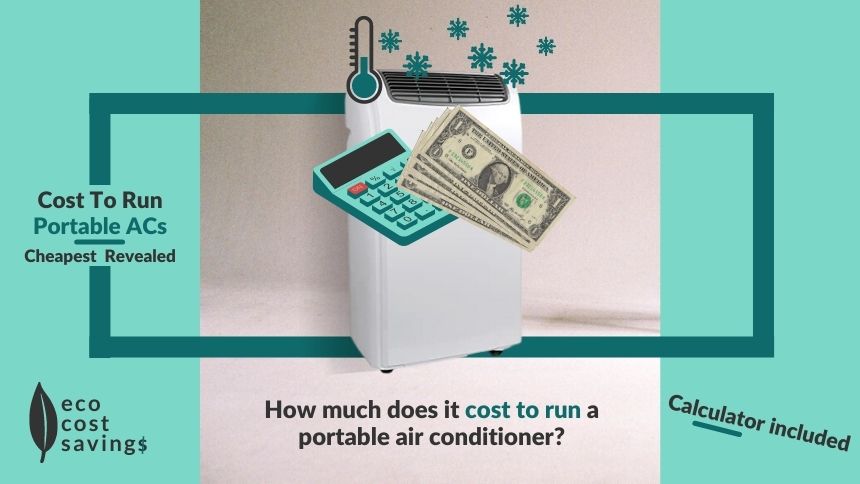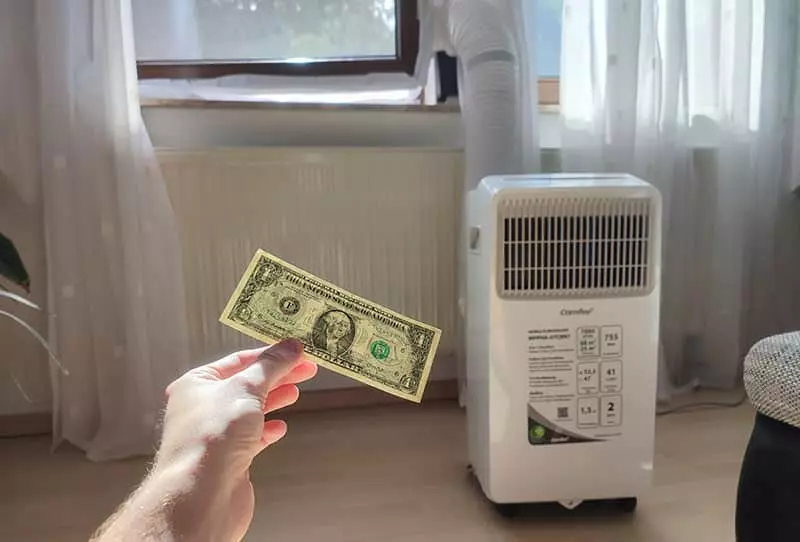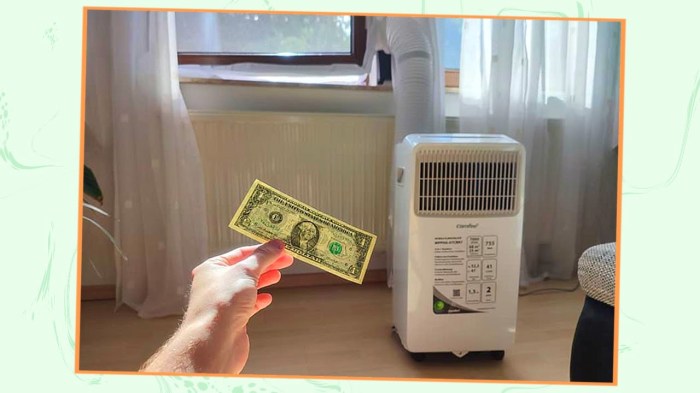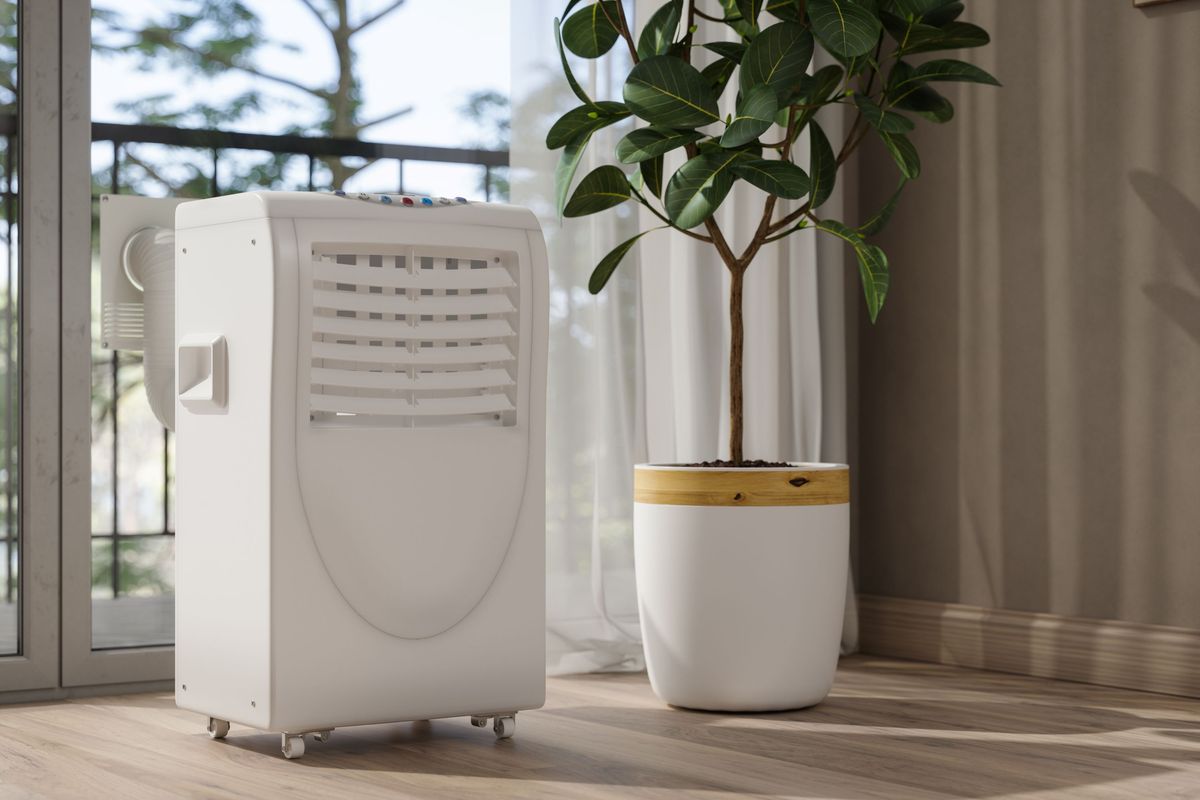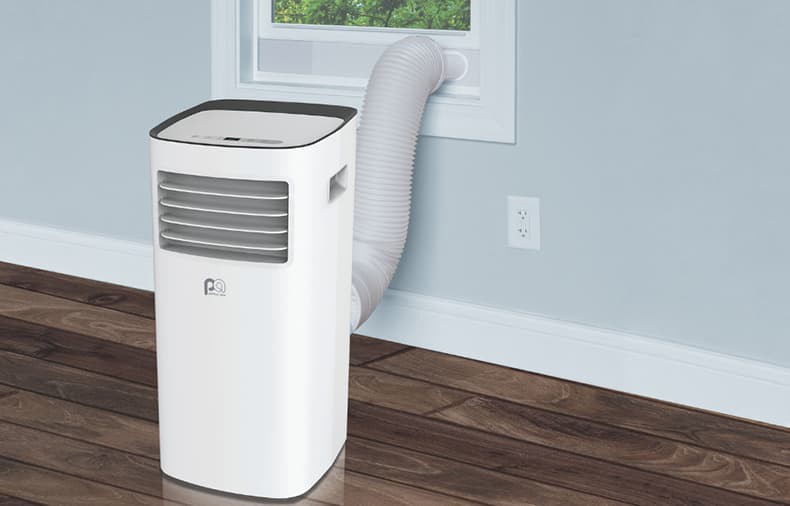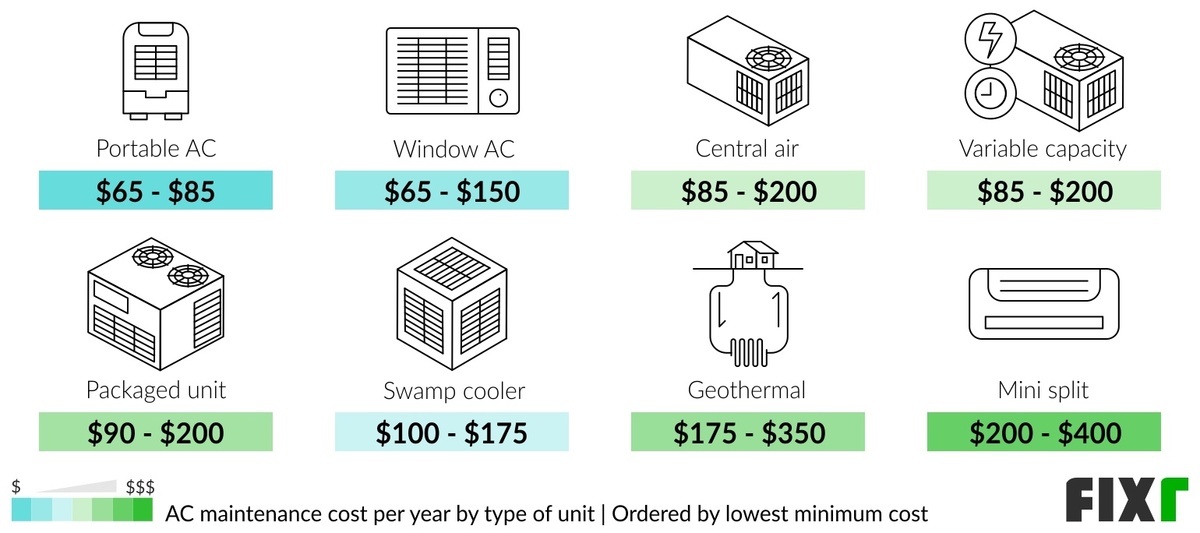How Much Does It Cost To Run Portable Ac

Portable air conditioners offer a convenient solution for cooling individual rooms, especially where central AC isn't available or practical. However, understanding the cost of running one is crucial for budgeting and making informed decisions. This guide breaks down the factors influencing the operating costs of portable AC units, providing you with the knowledge to estimate your energy consumption and expenses.
Understanding the Key Factors
Several elements contribute to the overall cost of running a portable AC. Let's examine each in detail:
1. BTU (British Thermal Units) Rating
The BTU rating measures the cooling capacity of an air conditioner. A higher BTU rating indicates a more powerful unit capable of cooling a larger space. However, it also means higher energy consumption. Think of BTU as the "engine size" of your AC – a bigger engine (higher BTU) uses more fuel (electricity).
Portable ACs typically range from 5,000 to 15,000 BTU. Choosing the right BTU for your room size is essential. An undersized unit will struggle to cool effectively, running constantly and wasting energy. An oversized unit, while cooling quickly, will cycle on and off frequently, also leading to inefficiency.
2. EER (Energy Efficiency Ratio) or SEER (Seasonal Energy Efficiency Ratio)
EER and SEER are measures of energy efficiency. EER is typically used for portable ACs, while SEER is more common for central air systems. Both indicate how efficiently an AC unit converts electricity into cooling power. A higher EER or SEER rating signifies greater energy efficiency, resulting in lower operating costs.
To understand EER, consider this: If an AC unit has an EER of 10, it means that for every watt of electricity consumed, it produces 10 BTU of cooling. Look for portable ACs with an EER of 9 or higher for better energy savings.
3. Electricity Rate
Your local electricity rate, measured in cents per kilowatt-hour (kWh), is a direct determinant of your operating costs. This rate varies depending on your location, electricity provider, and time of day (some areas have time-of-use rates). Check your electricity bill to find your current rate.
Electricity rates can fluctuate, so it's wise to have an understanding of the average cost per kWh in your area. Websites like the Energy Information Administration (EIA) provide data on average electricity prices by state.
4. Usage Hours
The number of hours you run your portable AC daily significantly impacts your electricity bill. The more you use it, the more energy you consume.
Consider using a programmable timer to automatically turn the AC on and off according to your schedule. This can help reduce unnecessary usage and save energy.
5. Room Size and Insulation
The size of the room you're cooling and its insulation quality influence how hard your AC has to work. A larger room requires a higher BTU unit or longer operating hours to achieve the desired temperature. Poor insulation allows heat to leak in, forcing the AC to work harder and consume more energy. Think of it like trying to cool a room with the windows open – the AC will struggle to maintain the temperature.
Ensure your windows and doors are properly sealed to prevent air leaks. Consider using curtains or blinds to block sunlight and reduce heat gain.
6. Additional Features
Some portable ACs come with energy-saving features such as sleep mode, auto mode, and variable fan speeds. Sleep mode gradually increases the temperature overnight, reducing energy consumption while you sleep. Auto mode automatically adjusts the fan speed and cooling output based on the room temperature. Variable fan speeds allow you to customize the airflow and energy consumption to your comfort level.
Calculating the Running Cost
Here's a step-by-step guide to estimating the running cost of your portable AC:
- Determine the Wattage: Find the wattage of your AC unit. This information is usually located on a sticker on the unit itself or in the owner's manual. If the label only shows amperage (amps), multiply the amps by the voltage (typically 120V in the US) to get the wattage (Watts = Amps x Volts).
- Convert Watts to Kilowatts: Divide the wattage by 1000 to convert it to kilowatts (kW). For example, a 1000-watt AC unit is equal to 1 kW.
- Calculate Daily Energy Consumption: Multiply the kilowatt rating by the number of hours you run the AC per day. For example, if you run a 1 kW AC unit for 8 hours a day, your daily energy consumption is 8 kWh (1 kW x 8 hours = 8 kWh).
- Calculate Daily Cost: Multiply your daily energy consumption (in kWh) by your electricity rate (in cents per kWh). For example, if your electricity rate is $0.15 per kWh and you use 8 kWh per day, your daily cost is $1.20 (8 kWh x $0.15 = $1.20).
- Calculate Monthly Cost: Multiply your daily cost by the number of days in the month. For example, if your daily cost is $1.20, your monthly cost is $36 ($.120 x 30 days = $36).
Example:
Let's say you have a portable AC with a wattage of 1200 watts, you run it for 6 hours a day, and your electricity rate is $0.18 per kWh.
- Wattage: 1200 watts
- Kilowatts: 1200 watts / 1000 = 1.2 kW
- Daily Energy Consumption: 1.2 kW x 6 hours = 7.2 kWh
- Daily Cost: 7.2 kWh x $0.18 = $1.30
- Monthly Cost: $1.30 x 30 days = $39
Therefore, running this portable AC would cost approximately $39 per month.
Tips to Reduce Running Costs
Here are some strategies to minimize the operating cost of your portable AC:
- Choose the Right Size: Select a portable AC with the appropriate BTU rating for your room size. Consult online resources or a HVAC professional to determine the ideal BTU for your needs.
- Seal Windows and Doors: Ensure your windows and doors are properly sealed to prevent air leaks and heat infiltration. Use weather stripping or caulk to seal any gaps.
- Use Curtains or Blinds: Block sunlight and reduce heat gain by using curtains or blinds, especially during the hottest part of the day.
- Set the Thermostat Wisely: Avoid setting the thermostat too low. Each degree lower increases energy consumption. Aim for a comfortable temperature that doesn't strain the AC unit.
- Utilize Energy-Saving Features: Take advantage of energy-saving features such as sleep mode, auto mode, and variable fan speeds.
- Use a Programmable Timer: Set a timer to automatically turn the AC on and off according to your schedule. This prevents unnecessary usage when you're not home or asleep.
- Regular Maintenance: Clean the air filter regularly to ensure optimal airflow and efficiency. A clogged filter restricts airflow, forcing the AC to work harder and consume more energy.
- Consider a Fan: Use a fan in conjunction with your portable AC to circulate the cooled air and reduce the AC's workload.
- Ventilation is Key: Make sure your unit is properly vented to the outside. The exhaust hose expels hot air, and any blockages will decrease efficiency.
- Check for Energy Rebates: Many utility companies offer rebates for energy-efficient appliances, including portable ACs. Check with your local utility company to see if you're eligible for any rebates.
Conclusion
Understanding the factors that influence the running cost of a portable AC allows you to make informed decisions about its usage and purchase. By considering BTU rating, EER/SEER, electricity rate, usage hours, room size, and energy-saving features, you can estimate your energy consumption and expenses. Implementing energy-saving tips can further reduce your operating costs and minimize your environmental impact. Investing in a more efficient unit with a higher EER/SEER rating, while initially more expensive, can result in significant savings over the long term.

